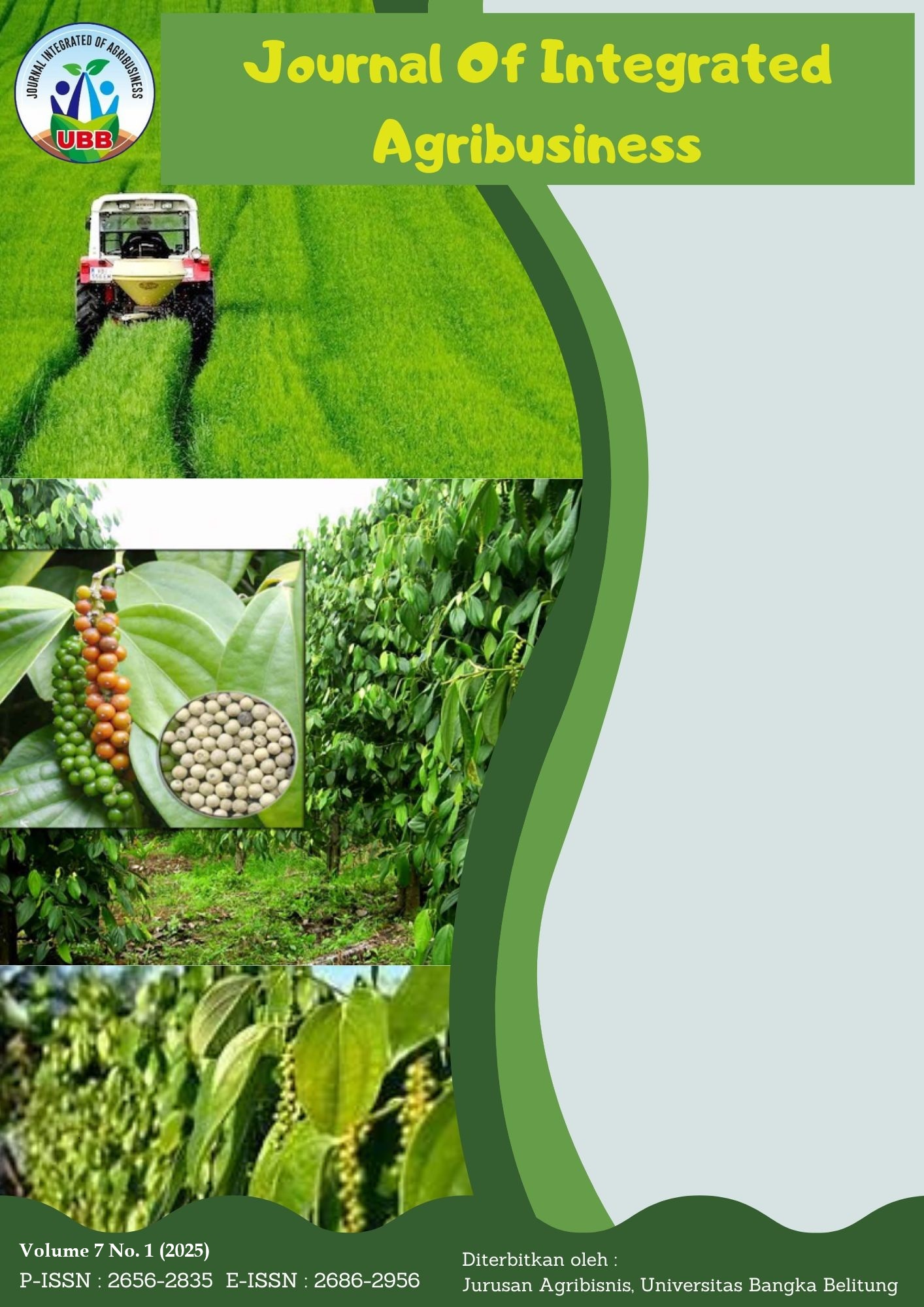Consumer Perception and Market Entry Strategy for a Novel MOCAF-Based All-Purpose Seasoning
Persepsi Konsumen dan Strategi Masuk Pasar untuk Produk Tepung Bumbu Serbaguna Berbasis MOCAF yang Inovatif
DOI:
https://doi.org/10.33019/jia.v7i1.6270Keywords:
All-Purpose Seasoning, Consumer Behaviour, Gluten-Free Products, Market Entry Strategy, Market Segmentation, Modified Cassava Flour (MOCAF)Abstract
This study aims to analyze consumer perceptions and preferences regarding a novel all-purpose seasoning based on Modified Cassava Flour (MOCAF) and to formulate an effective market entry strategy. A descriptive quantitative research design was employed, combining sensory evaluations and structured consumer surveys. Sensory evaluation involved 35 panelists who compared the MOCAF-based seasoning with two commercial brands, assessing attributes including taste, aroma, texture, and overall appearance. Results from the consumer survey indicated positive perceptions of the MOCAF-based seasoning, with respondents rating it favorably in terms of taste (74%), aroma (75%), and overall appeal (70%). However, price sensitivity emerged as a significant concern, with approximately 23% of respondents highlighting affordability as an issue. Demographic factors, especially education level and occupation, significantly influenced consumer perceptions. Housewives, in particular, showed greater awareness and familiarity with the product. Based on these findings, an integrated market entry strategy was developed, emphasizing market segmentation, targeting health-conscious households, particularly mothers and homemakers, and positioning the product as a healthier, gluten-free alternative to conventional seasonings. The study further recommends the implementation of educational campaigns, partnerships with influencers, and product sampling programs to enhance product awareness and build consumer trust. This research contributes to the existing body of literature on functional foods, particularly regarding sustainable local food innovations in emerging markets. The results provide practical insights for producers aiming to introduce MOCAF-based products to broader markets.
Downloads
References
Allen, N. (2017, April 19). What is the “health halo” effect? Missouri State University News. https://news.missouristate.edu/2017/04/19/health-halo-effect
Alsubhi, M., Blake, M., Nguyen, T., Majmudar, I., Moodie, M., & Ananthapavan, J. (2023). Consumer willingness to pay for healthier food products: A systematic review. Obesity Reviews, 24(1), Article e13525. https://doi.org/10.1111/obr.13525
Andirwan, A. (2023). Strategi pemasaran digital: Inovasi untuk maksimalkan penjualan produk konsumen di era digital. Jurnal Ilmiah Multidisiplin Amsir, 2(1), 155–166.
Asmoro, N. W. (2021). Karakteristik dan sifat tepung singkong termodifikasi (MOCAF) dan manfaatnya pada produk pangan. Journal of Food and Agricultural Product, 1(1), 1–8.
El Khoury, D., Balfour-Ducharme, S., & Joye, I. J. (2018). A review on the gluten-free diet: Technological and nutritional challenges. Nutrients, 10(10), Article 1410. https://doi.org/10.3390/nu10101410
Hananto, D., Firozji, M. S., Djalil, R., Handaru, H., Sutiawan, B., & Alfaiza, H. A. (2024). Strategi pengembangan produk baru dalam lingkungan bisnis yang kompetitif: Tantangan, pendekatan, dan keberhasilan. Jurnal Intelek dan Cendekiawan Nusantara, 1(3), 4694–4700. https://jicnusantara.com/index.php/jicn/article/view/682
Isfahami, M. M., Hurriyati, R., & Dirgantari, P. D. (2021). Pengaruh brand trust dan celebrity endorse terhadap keputusan pembelian konsumen. Jurnal Bisnis dan Kewirausahaan, 17(2), 177–186. https://doi.org/10.31940/jbk.v17i2.2571
Laine, A. (2016). Buying behavior of a consumer using gluten-free products in Finland: Case company X [Master’s thesis, Institution name unavailable].
Navarro, C. (2016). The effect of gluten-free labels on customers’ perception of healthiness, expected price, and willingness to purchase [Master’s thesis, Institution name unavailable].
Sumarwan, U. (2014). Model keputusan konsumen dan strategi pemasaran (Modul 1, Perilaku konsumen, pp. 1–68). Bogor Agricultural University Press.
Zakia, A., Adisti, A. A., & Asmarani, A. (2022). Faktor-faktor yang mempengaruhi kelas sosial: Gaya hidup, daya beli, dan tingkat konsumsi (literature review MSDM). Jurnal Ilmu Manajemen Terapan, 3(5), 449–457.
Zhang, L., & Chan, E. (2024). Why go gluten-free? How the feeling of low power increases preferences for free-from products. Psychology & Marketing. Advance online publication. https://doi.org/10.1002/mar.22125










